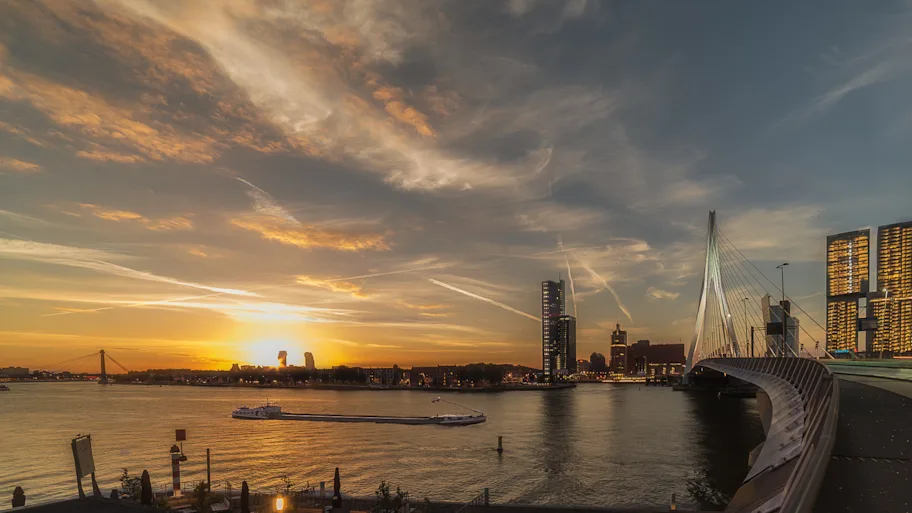
- Science news
- Featured news
- Social media images of culture can predict economic trends in cities
Social media images of culture can predict economic trends in cities

Ceiling of floating books in the Victorian roofed Leadenhall Market, London, UK. Image: Shutterstock
Images of exhibitions, festivals and other cultural events on Flickr successfully predict the economic rise of certain neighborhoods in London and New York City — including gentrification.
— By Rachael Bishop
The rise and prosperity of a city neighborhood is not predicated on economic capital alone — the presence of a vibrant arts, music and science culture is equally important. So says a groundbreaking study published in Frontiers in Physics, in which researchers used social media images of cultural events in London and New York City to create a model that can predict neighborhoods where residents enjoy a high level of well-being — and even anticipate gentrification by 5 years. With more than half of the world’s population living in cities, the model could help policymakers ensure human well-being in dense urban settings.
The New Urban Success: How Culture Pays
“Culture has many benefits to an individual: it opens our minds to new emotional experiences and enriches our lives,” says Dr. Daniele Quercia, Department Head Nokia Bell Labs, Cambridge, UK. “We’ve known for decades that this ‘cultural capital’ plays a huge role in a person’s success. Our new model shows the same correlation for neighborhoods and cities, with those neighborhoods experiencing the greatest growth having high cultural capital. So, for every city or school district debating whether to invest in arts programs or technology centers, the answer should be a resounding ‘Yes!'”
The term cultural capital was first coined by French sociologist Dr. Pierre Bourdieu in the late 1970s, as a way of understanding how a person’s knowledge, cultural interests, degrees and exposure to creative pursuits — including travel, art and technological innovation — are forms of ‘wealth’ that individuals bring to the ‘social marketplace,’ their personal relationships, and their communities. Bourdieu demonstrated that people with similar cultural capital tend to associate with each other, rather than going outside these bounds to build relationships. These relationships attract people of like mind and grow neighborhoods and societies.
While Bourdieu’s ideas of cultural capital as applied to individuals produced fascinating snapshots of social function, the concept has potentially profound applications when applied to cities and neighborhoods. This motivated Quercia and colleagues Dr. Desislava Hristova, from the University of Cambridge, and Dr. Luca M. Aiello, also from Nokia Bell Labs, to find a way to track how cultural capital plays out in urban areas.
The researchers accessed millions of Flickr images taken by people attending cultural events in London and in New York City over ten years. The events included festivals, libraries, cinema, art exhibitions, musical performances, technological demos, handicraft artisans, restaurants, museums, newspaper stands and theater. The team organized the images, which all had GPS tags indicating the place and time taken, into 25 categories. They also cleaned the data to adjust for outliers, accounting for issues such as many museums not allowing photos of exhibits and different generations gravitating to different choices.
“We were able to see that the presence of culture is directly tied to the growth of certain neighborhoods, rising home values and median income. Our model can even predict gentrification within five years,” says Quercia. “This could help city planners and councils think through interventions to prevent people from being displaced as a result of gentrification.”
“We already have data from wearable technology showing that both the 2016 US presidential election and 2016 Brexit referendum greatly impacted people’s sleep and even heart rates,” adds Aiello. “Information on cultural consumption could similarly be used to track the impacts of large-scale change.”
Related news: In the aftermath of disaster, social media helps build a sense of community
The model does have a couple of limitations. First, it only works for world-class cities, such as London, New York or perhaps Tokyo, where the penetration rates of social media are sufficiently high. The approach also does not work for populations that are not tech savvy as it depends on the independent use of technology and software by people to capture authentic images of what moves them.
The model also does not explain what causes gentrification — namely, which occurs first: increasing cultural offerings that reorient social identity and thus, capital, or people seeking more cultural capital as they climb the economic ladder. Somewhere in this complex equation is the as-yet unknown artist/chef looking for an affordable studio/kitchen who inspires a clientele and a new generation of artists/chefs.
Even so, the insights generated by this and other models could help people to successfully live in dense urban settings — an increasingly relevant issue. The United Nations estimates that 54 percent of the world’s population lived in urban environments in 2014 and predicts the figure to rise to 69 percent by 2050.
“Next, we want to measure the relative health of communities, looking at the availability of healthy food, farmer’s markets, sports, parks, beautiful architecture and so forth,” says Quercia. “By overlaying different maps upon each other, we can create a vertically integrated map showing how exposures to different influences can accurately reflect a neighborhood’s sense of well-being.”
The research is part of a special article collection on culturomics — the study of human behavior and cultural phenomena through quantitative analysis of big data.
Original article: The New Urban Success: How Culture Pays
REPUBLISHING GUIDELINES: Open access and sharing research is part of Frontiers’ mission. Unless otherwise noted, you can republish articles posted in the Frontiers news blog — as long as you include a link back to the original research. Selling the articles is not allowed.






